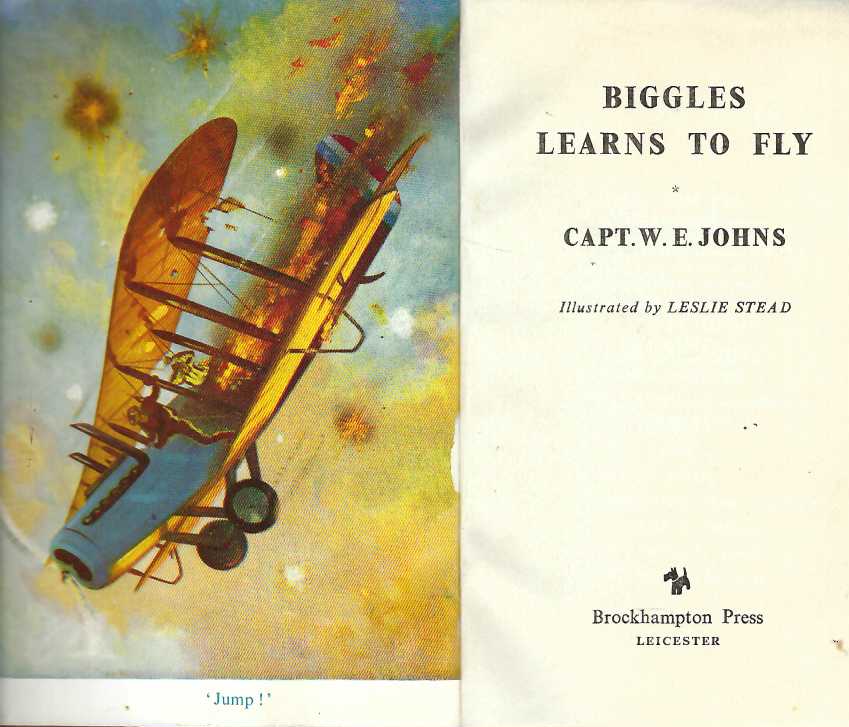Aged 17 and with almost no flying experience James Bigglesworth is sent to tackle the enemy in the hostile skies over first world war France. In a theatre of war where instinct and lightening-fast reactions are essential, Biggles must learn to be a real flyer – or die …
Biggles Learns to Fly started life as 12 separate short stories published individually in The Modern Boy between April-June 1934. In November 1935, the stories were gathered and published over 24 chapters in paperback form by the Boy’s Friend Library with “Flying Officer W. E. Johns” as the author. Even this first book edition deviated significantly from the original Modern Boy version. One of the stories, Knights of the Sky was moved from its original sequence to the end of the book, and heavily edited to make it fit.
Learns to Fly was not seen again until 1955 when Brockhampton republished a edited version which comprised only 16 chapters. One story, Spy in the Sky was left out totally as it had already been used in Biggles of 266. Subsequent editions by Armada, Red Fox varied in their adherence to the original format.
The stories in Biggles Learns to Fly take place between late September 1916 and around July 1917, There are many anachronisms in the book Some are quite insignificant, but others are substantive:
- A tiny error: in Biggles the Scout (Late for Dinner), supposedly 3 weeks after “late September 1916”, Biggles sees a crescent moon in the evening shortly after dark. There was no such crescent moon until October 28th, 4 weeks after the end of September.
- In Crashed Flyers (A Daring Stunt), a story that apparently takes place in (or near) late October 1916, the text refers to Richthofen grouping three squadrons together (i.e. a Jagdgeschwader). This did not happen for another ten months. In October 1916, Richthofen was barely an ace, and he was a pilot of Jagdstaffel 2 under the command of Oswald Boelcke. A far better fit would be Boelcke’s forming of Jagdstaffeln from the small KEK units which preceded them. This happened at exactly this time.
- Throughout the book, Biggles encounters massed formations of as many as 30 Fokker Dr.I Triplanes. This is impossible during the time period covered by the book, as the first two Fokker Triplane prototypes did not get to the front until August 1917, a month after the time period the book covers. Also, no German Jagdstaffel was fully equipped with the Dr.I until 1918, and no Jagdgeschwader was ever equipped purely with Fokker Triplanes. The actual aircraft encountered during this time would have been Albatros D.IIs, D.IIIs and D.Vs.
- Another small error: the stories mention Sopwith Pups being used by the R.F.C as early as October 1916. Pups were only used by the R.N.A.S. at this time. The first R.F.C. squadron to use Pups did not arrive in France until December.
pp. 192 #060822 (ownership label on fep) Illustrated by Leslie Stead
